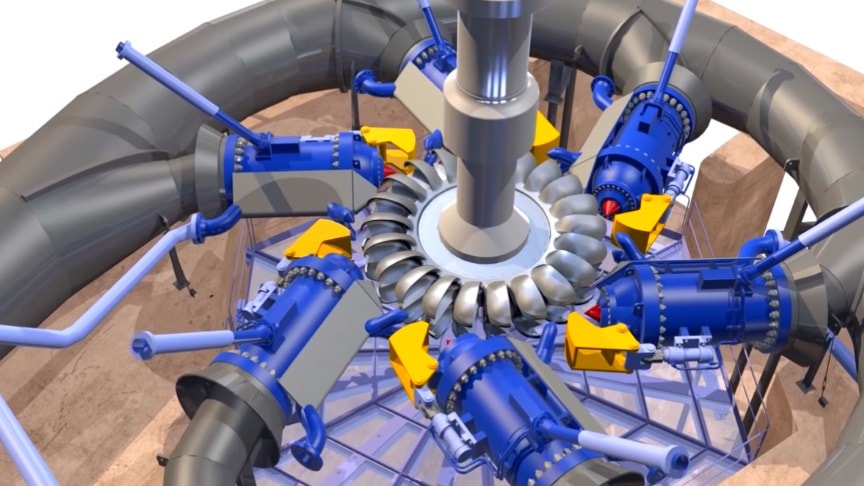Flight Through a Hydropower Plant Explaining a Pelton Turbine – Animation

Flight through a hydropower plant explaining a Pelton turbine. Pelton turbine designs, shown in the video, are typically designed for an output of 50-500 MW.A broad manufacturing program offers an economical solution for any significant requirement. Large, custom-built Pelton turbines for high output ranges of up to 1 500 m are our speciality.
source/image: Voith Hydro
The Pelton turbine has a fairly simplistic design. A large circular disk is mounted on some sort of rotating shaft known as a rotor. Mounted on this circular disk are cup shaped blades known as buckets evenly spaced around the entire wheel. Generally, the buckets are arranged in pairs around the rim.video by: Voith Hydro
Pelton’s paddle geometry was designed so that when the rim ran at half the speed of the water jet, the water left the wheel with very little speed; thus his design extracted almost all of the water’s impulse energy—which allowed for a very efficient turbine.Pelton wheels are the preferred turbine for hydro-power where the available water source has relatively high hydraulic head at low flow rates.
Advertisement
Pelton wheels are made in all sizes. There exist multi-ton Pelton wheels mounted on vertical oil pad bearings in hydroelectric plants. The smallest Pelton wheels are only a few inches across, and can be used to tap power from mountain streams having flows of a few gallons per minute. These small units are recommended for use with 30 metres (100 ft) or more of head, in order to generate significant power levels. Depending on water flow and design, Pelton wheels operate best with heads from 15–1,800 metres (50–5,910 ft), although there is no theoretical limit.via: wikipedia
https://ift.tt/2IJoWZV